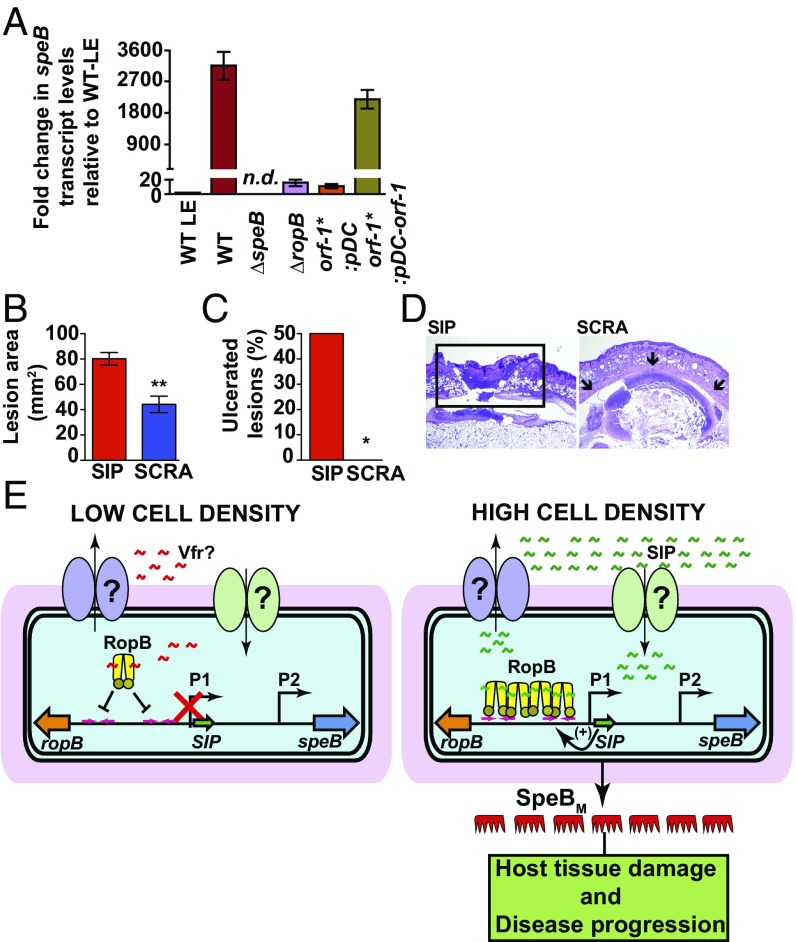Fig. 6.
SIP signaling controls speB expression during infection. (A) Analysis of the speB transcript level in the s.c. lesions from mice infected with the indicated strains. Samples were collected 24 h postinfection (P.I.) from the lesions of four mice per strain and analyzed in triplicate. Data were graphed as mean SD, with P values derived from a two-sample t test. Ten immunocompetent hairless mice per group were infected s.c. with the orf-1* mutant coinjected with either 10 μg of synthetic SIP or SCRA peptide. LE, late exponential GAS growth in laboratory medium. The lesion area (B) and ulceration (C) caused by each peptide at 24 h P.I. were determined. The lesion area was measured and graphed (mean ± SEM). The P value was derived by the Mann–Whitney test. *P < 0.05; **P < 0.001. (D) Histopathologic analysis of lesions from mice coinjected s.c. with SIP or SCRA peptide. SIP-induced ulcerated lesions that extend beyond the field of view are boxed. Coinjection with SCRA peptide caused small abscesses that are confined to the inoculation site (indicated by arrows). [Scale bars: 3.3 mm × 4.4 mm (y axis × x axis) at 2× magnification.] (E) Proposed model for the mechanism of intercellular communication and GAS virulence regulation. (Left) At low cell density, the secretion signal sequence of Vfr binds to RopB and negatively influences RopB-dependent transcription activation from the P1 promoter, possibly by disrupting RopB–DNA interactions. (Right) At high cell density, SIP is produced, secreted, and reimported into the cytosol. The high-affinity RopB–DNA interactions and RopB polymerization aided by SIP binding lead to up-regulation of sip expression, which results in robust induction of SIP production by a positive-feedback mechanism. In addition to up-regulation of virulence genes, the SIP signaling circuit down-regulates the expression of categories of genes involved in GAS growth and host cell attachment. Finally, the SIP-dependent up-regulation of speB leads to abundant secretion of mature SpeB (SpeBM), which facilitates host tissue damage and disease dissemination by cleavage of various host and GAS proteins.

